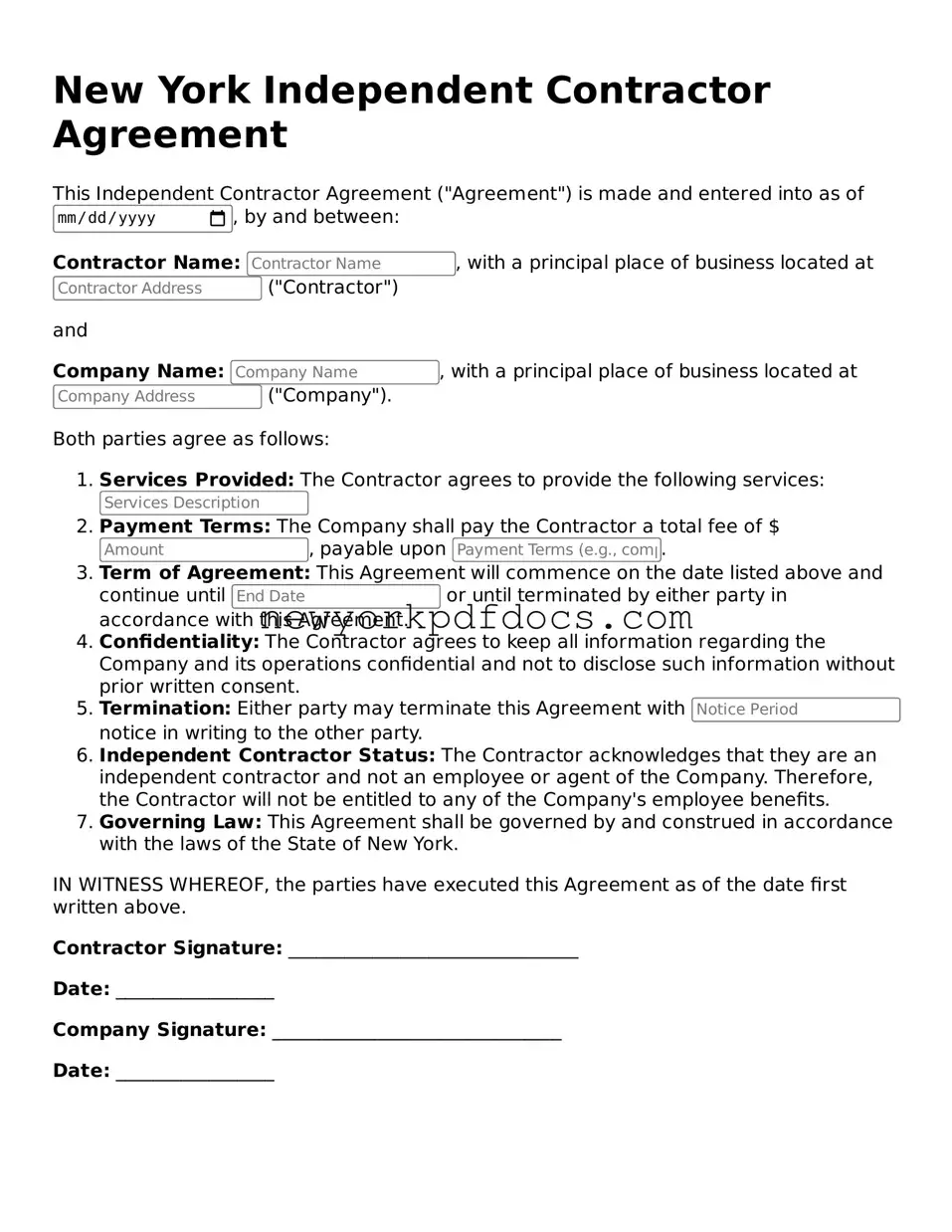Valid Independent Contractor Agreement Document for New York
The New York Independent Contractor Agreement is a legal document that outlines the terms and conditions between a business and an independent contractor. This agreement defines the scope of work, payment terms, and responsibilities of both parties. Understanding this form is essential for ensuring a clear and professional working relationship.
Open My Document Now
